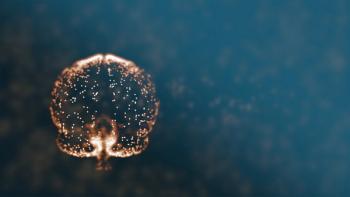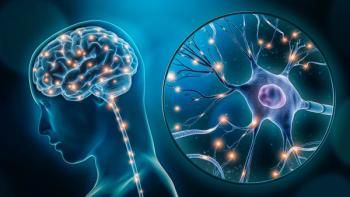
Fava Beans, Dopamine, Depression, and Parkinson Disease
Key Takeaways
- Fava beans contain L-DOPA, which can cross the blood-brain barrier and convert to dopamine, potentially aiding Parkinson's disease and mood disorders.
- Historical and cultural significance of fava beans spans from ancient Mediterranean societies to modern-day culinary traditions in the Middle East and North Africa.
Fava beans emerge as a powerful natural source of L-DOPA, offering potential benefits for mood disorders and Parkinson's disease and holding enriching culinary traditions.
Beans have been big news in recent years. Wall Street Journal articles praised the high protein, high fiber, low fat bean, crowning them as America’s “new nutrition obsession” and calling them “the new kale,” but neglected specific mention of the dopaminergic fava beans.1-3 Fava beans contain L-DOPA, the precursor to dopamine. L-DOPA passes through the blood-brain barrier and is converted to dopamine in the brain.4
Yet, fava beans are also very old news. The contemplative and mathematically-inclined Pythagorean sect, who lived in a Mediterranean region where glucose-6-phosphate dehydrogenase (G-6-PD) deficiency is endemic, banned these beans, perhaps because potentially excitatory dopaminergic foods might interfere with their aspired meditative states—or perhaps to protect against potentially deadly hemolytic anemia (favism) that can occur when individuals with this X-linked genetic disorder eat fava beans.
Elsewhere in Italy, and especially in Sicily or places populated by Italian immigrants (such as New Orleans), fava beans remain prominent because legend says that the easy-to-grow, early-to-mature beans saved residents from starvation when famine put other food in short supply. To honor their patron Saint Joseph, who was credited with protecting the fava bean harvest, the locals continue to observe St. Joseph’s Day (March 19) by offering beans at altars.5
We can trace fava beans still further back in history. Known as “pol” or “ful,” they are mentioned in the Hebrew Bible, and have been found at 6000 year old archaeological sites in Israel. Some sources even cite 10,000 year old sites. Pol is mentioned as a food source for David and his warriors in 2 Samuel 17:28, and in Ezekiel 4:9. Ezekiel is instructed to mix broad beans with grains and lentils to make a coarse bread that symbolizes famine conditions. Moving ahead many centuries, we find discussion of fava beans’ cultivation and preparation in the Talmud and the Mishna, the Jewish “Oral Law” that comments on the Pentateuch. This confirms that ful/pol was a significant part of the Middle Eastern diet from the 4th century CE, if not earlier.
Curiously, the Talmudic techniques for cooking fava beans are strikingly similar to recipes for the modern Middle Eastern dish, "Ful Mudammas." Porridge-like, it is eaten with garlic and olive oil, possibly mixed with parsley, cumin, lemon, or herbs, or judiciously-dosed with hot chili peppers or zaatar. Sometimes, tomatoes, onions, cucumbers, eggs, or pickles are added to the concoction, along with sesame-seed based tahini and the obligatory pita bread.
Ful medames is the national dish of Egypt. It is enjoyed as a breakfast in many more Levantine or East African or North African countries. Local street stands sell ful-based treats; Falafel recipes—especially Egyptian falafel—often add ful to the customary chickpeas. With its filling nature, and possible appetite-suppressant effects that come courtesy of its dopaminergic properties, ful-based breakfasts that are eaten before sunrise can sustain people during long fasts like Ramadan.
In contemporary times, fava beans are a farmer’s favorite because they fix nitrogen to produce “green manure,” which enhances the soil between seasons and promotes better harvests. Fava beans also ward off pests that infest other produce. In the US, most fava bean harvests are diverted to livestock as animal feed, so it can be an insult to serve fava beans to guests, both in America and in many parts of Europe. In some places, these beans, which require extensive preparation and labor-intensive shelling, are luxuries, although some chefs claim that the shells of older beans can be consumed without undue discomfort.
Current Concerns About Fava Beans
As psychiatrists, most of us are probably less versed in agriculture and are more conversant with our chosen medical specialty, but we probably remember fava beans from psychopharmacology lectures, where we learned that tyramine-rich foods—such as fava beans or broad beans—can cause fatal hypertensive crises when ingested by persons taking monoamine oxidase inhibitor (MAOI) antidepressants.6 Hematologists, on the other hand, are more familiar with the less deadly “favism,” and the hemolytic anemia that strikes patients with G-6-PD deficiencies after eating these particular beans.
Those who found psychopharmacology courses less than entertaining may better recollect fava beans on film, where the fictional, highly cultured psychiatrist and arch-villain from Jonathan Demme’s The Silence of the Lambs (1991) trumpeted his affection for fava beans (and for other unappealing entrees that earned him the moniker, “Hannibal the Cannibal”).6 Dr Hannibal Lecter proclaims that “I ate his liver with some fava beans and a nice chianti.” These other 2 foods are also high in tyramine and are off-limits to individuals treated with MAOIs.
Anecdotal reports (along with some small, controlled studies) show that these ancient legumes produce measurable L-DOPA blood levels that are comparable to standard L-DOPA medication doses. Thus, these beans can provide short-term relief from the motor symptoms of Parkinson disease.7-10 They may also be useful for treating depression and attention-deficit/hyperactivity disorder—2 other common conditions that may respond to dopamine-raising medications. Some individuals attest that the beans can offset sexual dysfunction, be it serotonin reuptake inhibitor-induced or otherwise.
While complete confirmatory data about fava beans’ utility as dopamine substitutes is “not ready for prime time,” and it is too soon to discard more mainstream approaches, it is still worth examining the potential of these natural and affordable adjunctive treatments; especially at a time when more and more patients ask for (or demand) natural treatments for mood disorders and when so many inquire about diets that decrease depression, we can predict that further research will be beneficial.11
Not all fava beans are created equal when it comes to their dopaminergic properties, though. Vicia faba grows well in temperate regions, where it is the most common variety. In cooler parts of North America and Europe, it germinates in early spring, even before peas sprout. Vicia faba causes L-DOPA production reliably, but not nearly as abundantly as its cousin Mucuna pruriens, which thrives in warm and sunny climates of India and Iran. In India, M. pruriens is an Ayurvedic staple, and is a standard traditional medicine prescription for Parkinson disease. Because of Mucuna’sperceived (but unproven) potential for building muscle mass and increasing endurance for strenuous exercise, some bodybuilders seek out Mucuna through online suppliers for much the same reasons that some of them misuse medicinal L-DOPA.
There are further nuances to note in the production of these beans. Young beans yield more L-DOPA than aged beans. Bean pods, when picked from the vine before the beans mature, have more L-DOPA than the beans themselves. Beans that are pretreated with specific fungi, or that are microwaved before planting, have increased yields of L-DOPA.12 Scientists are currently researching ways to increase the L-DOPA content and are developing ways to measure L-DOPA as plants grow in the fields, with the hopes of creating plant products that are more marketable.13
Unlike commercial medications, which are manufactured in controlled environments and monitored by the US Food and Drug Administration (FDA) and other government overseers in the US, natural plant products are not always reliable. Their potency and quantity can differ from season to season because of changes in climate, soil conditions, competitive plants, and so on. This variability theoretically limits their use by more “evidence-based” resources. Although, it is worth noting that The Office of Dietary Supplements reports that as of April 2024, Americans spent approximately $60 billion a year on even less reliable nutraceuticals and that number is expected to increase. Like fava beans, and unlike prescription drugs, these natural plant supplements do not need FDA approval for efficacy and therefore have much in common with fava beans or Mucuna.
Despite these important limitations, we have impressive data documenting the beans’ efficacy in relieving mild Parkinsonian motor symptoms. These motor changes are easier to quantify than are changes in mood or mentation. Fava beans can also offset the troubling on-off effect of standard Parkinson disease medications, and may even enhance absorption of medicinal L-DOPA, since more L-DOPA is absorbed in the presence of carbohydrates. To further confirm the beans’ dopaminergic potency, reports of neuroleptic malignant syndrome following abrupt discontinuation of fava beans have been published. These effects parallel related results from when medicinal L-DOPA is stopped suddenly.
Several websites tout the benefits of fava beans, some of them more credible than others. A guru of alternative medicine, Andrew Weil, MD, reserves his recommendations, but notes that an adequate anti-Parkinson dose requires consumption of an entire can of fava beans; though, a nutritionist who posts detailed calculations concluded that that 2 tablespoons canned beans daily are sufficient. To me, even a teaspoon of canned fava beans is too much, not because of the excess dopamine, but because of the unappealing taste of the unadorned beans. Moreover, fresh fava beans have more L-DOPA than dried, but they are expensive, if they can be found at all, and shelling the beans is no easy matter. But these details are immaterial, since fresh off the vine fava beans are best, both for flavor, L-DOPA yield, and ease of use.
Considering that it is easy to grow fava beans, is inexpensive, and it is fun to pluck the beans from the flowering vines after the pods form (when the L-DOPA content is highest and when there is no need to shell the beans), why would we revert to worse tasting canned products with insufficient L-DOPA content to boot? Equally importantly, planting and harvesting fava beans can be a form of “behavioral activation,” which itself is an extremely effective adjunct to antidepressant medications. An individual with depression who simply engages in (presumably safe) pleasurable activities, via “behavioral activation,” has a 74% chance of achieving full remission from depression. That number is far more impressive than the respective 64% or 56% remission rates obtained from CBT or psychodynamic therapies, as reported in New England Journal of Medicine.
In summary, the next time patients ask about better diets for depression, do not forget to mention fava beans—as well as the behavioral activation that comes from planting them, activation that results from cooking them, and the social support from inviting guests to a fava-bean based dinner.
Dr Packer is an assistant clinical professor of psychiatry and behavioral sciences at Icahn School of Medicine at Mount Sinai in New York, New York.
References
1. Petersen A. More beans, less red meat: new report proposes changing American dietary guidelines. Wall Street Journal. December 10, 2024. Accessed July 7, 2025.
2. Petersen A. Sorry kale, beans are the new nutrition obsession. Wall Street Journal. November 20, 2024. Accessed July 7, 2025.
3. Chaker AM. Beans: the superfood you’ve always known. Wall Street Journal. March 19, 2018. Accessed July 7, 2025.
4. Fuentes-Herrera PB, Herrera-Cabrera BE, Martínez-Ayala AL, et al.
5. Abala K. Beans: A History. Bloomsbury; 2017.
6. MAOIs and diet: is it really necessary to restrict tyramine? Mayo Clinic. January 31, 2025. Accessed July 7, 2025.
7. Packer S. Cinema’s Sinister Psychiatrists. McFarland Books; 2012.
8. Kempster PA, Bogetic Z, Secombei JW, et al.
9. Hu D, Qing G, Liu X, et al.
10. Ljungberg T, Bondza E, Lethin C.
11. Swainson J, Reeson M, Malik U, et al.
12. Yilmaz H.
13. Renna M, De Cillis F, Leoni B, et al.
Newsletter
Receive trusted psychiatric news, expert analysis, and clinical insights — subscribe today to support your practice and your patients.




